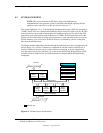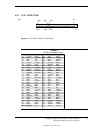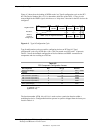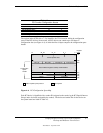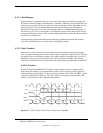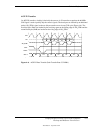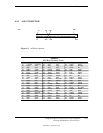
Chapter 4 System Support
Compaq Deskpro EN Series of Personal Computers
Desktop and Minitower Form Factors
Third Edition - September 1998
4-8
Table 4–5. System Board PCI Device Identification
Table 4-5.
System Board PCI Device Identification
PCI Device Vender ID Device ID
North Bridge (82443 PAC):
Host/PCI Bridge (Function 0)
PCI/AGP Bridge (Function 1) [1]
8086h
8086h
7190h
7191h
South Bridge (82371 PIIX4):
PCI/ISA Bridge (Function 0)
EIDE Controller (Function 1)
USB I/F (Function 2)
Power Mngmt. Cntlr (Function 3)
8086h
8086h
8086h
8086h
7110h
7111h
7112h
7113h
NOTES:
[1] Graphics Address Remapping Table (GART) used on all systems.
4.2.3.3
Special Cycles
There are two types of special cycles that may occur on the PCI bus. The first type is initiated by
the host and is used to perform the following functions: Shutdown, Flush, Halt, Write Back,
Flush Acknowledge, Branch Trace Message, and Stop/Grant. These cycles start like all other PCI
cycles and terminate with a master abort.
The second type of special cycle is initiated by writing to 0CF8h, Bus # = all 0s, Device = all 1s,
(Function # all 1s, and Register = all 0s) and 0CFCh to generate a Type 0 configuration cycle.
This Type 0 cycle, however, does not assert any of the IDSEL lines and therefore results in a
master abort with FFFFh returned to the microprocessor.
4.2.4
OPTION ROM MAPPING
During POST, the PCI bus is scanned for devices that contain their own specific firmware in
ROM. Such option ROM data, if detected, is loaded into system memory’s DOS compatibility
area (refer to the system memory map shown in chapter 3).





